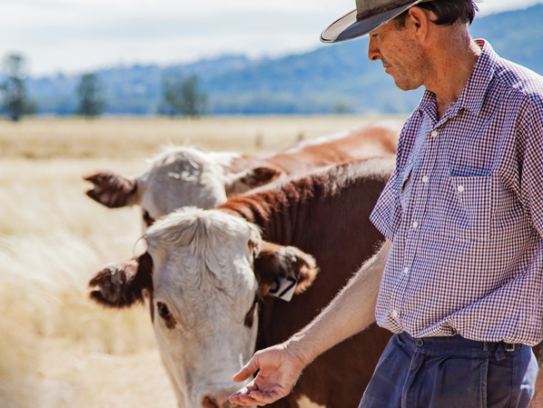Q Fever is on the rise. Despite rarely causing clinical disease in animals, Q Fever can be transmitted from infected animals to humans.
Q Fever may be undiagnosed because it can have similar symptoms to the flu, such as muscle pains, headaches, nausea, fatigue, fever and chills. However, Q Fever can also have debilitating, long-term health consequences.
As well as negatively impacting on the individuals’ health, Q Fever also puts businesses and the livestock industry at risk.
Protect yourself, your family and your employees. Get vaccinated against Q Fever.
For more information about Q Fever contact:
- Your GP or health professional
- Australian Q Fever Register on 1300 733 837 or visit www.qfever.org
- Q Fever facts from Seqirus www.qfeverfacts.com.au
- Department of Health and Human Services Infection disease surveillance
- Q Fever Fact Sheet
Q Fever FAQs
1. What is Q Fever?
Caused by bacterium Coxiella burnetii, Q Fever is a zoonotic disease transmitted to humans by direct or indirect contact with infected animals or animal products. Q Fever is notifiable in Australia and results in flu-like symptoms, often causing it to be disregarded or misdiagnosed. Despite symptoms often being only temporary, it can have debilitating, long-term health consequences which also negatively impact the industry and economy.
2. How is Q Fever transmitted?
You can get Q Fever from infected animals either indirectly or directly. The most common route is inhalation of infected aerosols such as infected droplets of urine, milk, faeces, or birth products containing the bacteria C. burnetii. It can also be contracted from drinking unpasteurised milk from an infected animal, inhaling dust from wool, hides or straw that has been infected with the bacteria. Please note that you cannot get Q Fever from eating meat.
3. Who is at risk?
Anyone unvaccinated against Q Fever and livestock workers are at highest risk of contracting the disease. This includes farmers, abattoir workers, laboratory personnel handling veterinary specimens, veterinarians and veterinary students, professional dog and cat breeders and handlers, and even people visiting at-risk environments. As long as you are unvaccinated and in direct or indirect contact with livestock, you are at risk of catching Q Fever.
4. What does the vaccination process involve?
Vaccination against Q Fever is a multi-step process. Blood and skin tests must be conducted prior to vaccination to ensure the individual hasn’t had prior exposure to Q Fever. Individuals must revisit the clinic 7 days later to be safely vaccinated if test results are negative. Individuals whose test results are positive indicates they are protected due to being previously exposed to Q Fever, and are unable to receive the vaccine due to risk of having a severe inflammatory reaction.
5. How do I know if I am immune?
The only way to be certain you are immune against Q Fever is to visit a clinic and get vaccinated. The first stage of the process involves a blood and skin test which tests for prior infection against Q Fever. Negative test results indicate the individual has not previously been exposed to the disease and is not immune, whereas positive results indicate that they have been previously exposed and are thus immune to the disease.
6. Where can I get vaccinated?
Only specific clinics are able to vaccinate against Q Fever. For a list of vaccinators near you, please visit The Australian Q Fever Register at https://www.qfever.org/findavaccinator or call 1300 QFEVER (1300 733 837).

